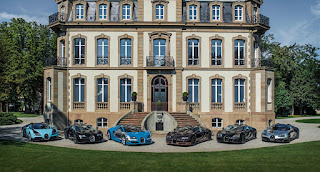Exploring the History of Bugatti
Introduction:
Bugatti is a name synonymous with luxury, performance, and automotive excellence. With a rich heritage spanning over a century, the marque has left an indelible mark on the automotive world, producing some of the most iconic and sought-after cars in history. In this article, we embark on a journey through time to explore the illustrious history of Bugatti, tracing its origins, innovations, triumphs, and enduring legacy.
1. Origins and Founding:
The story of Bugatti begins in 1909 when Italian-born Ettore Bugatti founded Automobiles E. Bugatti in the town of Molsheim, Alsace, then part of the German Empire. From the outset, Bugatti aimed to create cars that combined exquisite craftsmanship with unparalleled performance, drawing inspiration from his family's heritage of artisanal design and engineering.
2. Artistry in Motion:
Bugatti cars quickly gained a reputation for their exceptional design, engineering prowess, and attention to detail. Ettore Bugatti's uncompromising pursuit of perfection resulted in some of the most beautiful and technologically advanced automobiles of the era, characterized by their distinctive styling, advanced chassis design, and powerful engines.
3. Racing Success:
Bugatti's involvement in motorsports played a significant role in shaping the brand's identity and reputation. Throughout the 1920s and 1930s, Bugatti cars dominated the racing circuits of Europe, claiming numerous victories in prestigious events such as the Targa Florio, Grand Prix de Monaco, and 24 Hours of Le Mans. The Bugatti Type 35, in particular, became one of the most successful racing cars of all time, earning over 2,000 victories and cementing Bugatti's status as a racing legend.
4. Iconic Models:
Over the years, Bugatti has produced some of the most iconic and celebrated cars in automotive history. From the elegant Bugatti Type 41 Royale, with its massive engine and opulent luxury, to the groundbreaking Bugatti Veyron, the world's first production car to exceed 250 mph, each Bugatti model embodies the brand's commitment to excellence, innovation, and performance.
5. Revival and Reinvention:
After a period of dormancy following World War II, the Bugatti name was revived in the late 20th century by Italian entrepreneur Romano Artioli, who founded Bugatti Automobili S.p.A. in 1987. Under Artioli's leadership, Bugatti introduced the EB110 supercar, a technologically advanced and visually striking machine that paid homage to Bugatti's heritage while embracing modern engineering and design principles.
6. Modern Marvels:
In 1998, Bugatti became part of the Volkswagen Group, leading to the development of the Bugatti Veyron, a groundbreaking hypercar that redefined the limits of automotive performance. With its quad-turbocharged W16 engine, all-wheel-drive system, and top speed exceeding 250 mph, the Veyron set new benchmarks for speed, power, and engineering excellence.
7. The Legacy Continues:
Today, Bugatti continues to push the boundaries of automotive engineering and design with models like the Chiron and Divo, which embody the brand's relentless pursuit of perfection and performance. With their exquisite craftsmanship, breathtaking performance, and uncompromising luxury, these modern Bugatti cars carry on the legacy of their legendary predecessors, ensuring that the spirit of Bugatti lives on for generations to come.
Conclusion:
From its humble beginnings in a small French town to its status as a global icon of luxury and performance, the story of Bugatti is one of passion, innovation, and excellence. Through visionary leadership, groundbreaking engineering, and a relentless commitment to perfection, Bugatti has left an indelible mark on the automotive world, producing some of the most coveted and celebrated cars in history. As Bugatti continues to push the boundaries of automotive excellence, its legacy remains firmly entrenched in the annals of automotive history, inspiring enthusiasts and admirers around the world.





Comments
Post a Comment